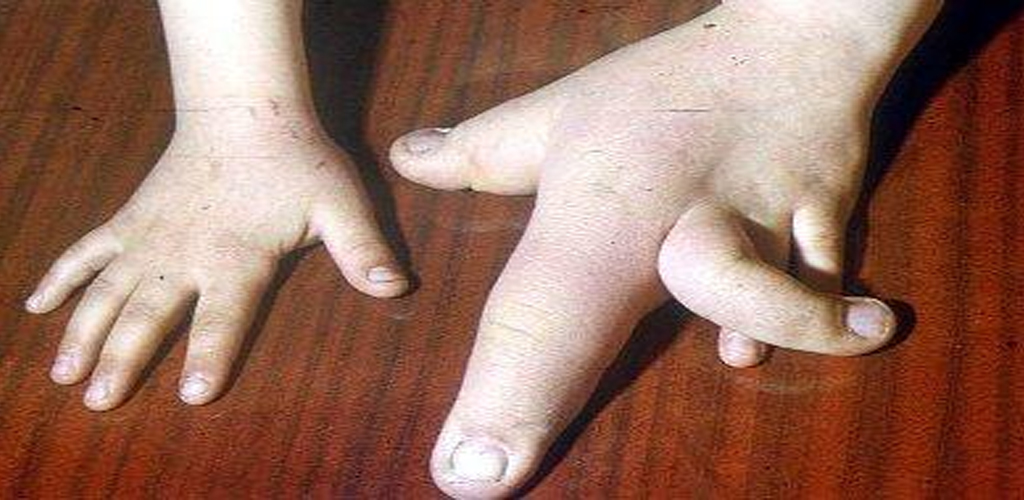Enlargement of one or more fingers or toes.
.png)

Macrodactyly is a rare congenital condition characterized by the abnormal overgrowth of one or more fingers or toes. This overgrowth can result in enlarged digits that are disproportionate to the rest of the hand or foot. Macrodactyly typically manifests in early childhood and can affect both the soft tissues and bones of the affected digits.
Individuals with Macrodactyly may experience the following symptoms:
Enlargement of one or more fingers or toes.
Disproportionate size compared to other digits.
Abnormalities in bone and soft tissue growth.
Potential functional limitations depending on the size and structure of the affected digits.
The exact cause of Macrodactyly is not well understood, but it is believed to be a result of abnormal development during fetal growth. Genetic factors may also play a role in some cases.
Diagnosing Macrodactyly involves a comprehensive evaluation, including:
A thorough examination of the affected fingers or toes to assess size, shape, and function.
X-rays or other imaging techniques to visualize the bones and soft tissues in the affected area.
Management of Macrodactyly may involve:
Debulking or reduction surgery to remove excess tissue and reshape the affected digits.
Customized orthopedic solutions, including braces, to support hand or foot positioning and overall function.
Rehabilitative therapies to optimize function, mobility, and adaptation to any residual abnormalities.
If you or your child is affected by Macrodactyly, our specialized team is ready to provide personalized care. Schedule a consultation to discuss tailored solutions that address the unique needs of Macrodactyly and enhance overall hand or foot function.